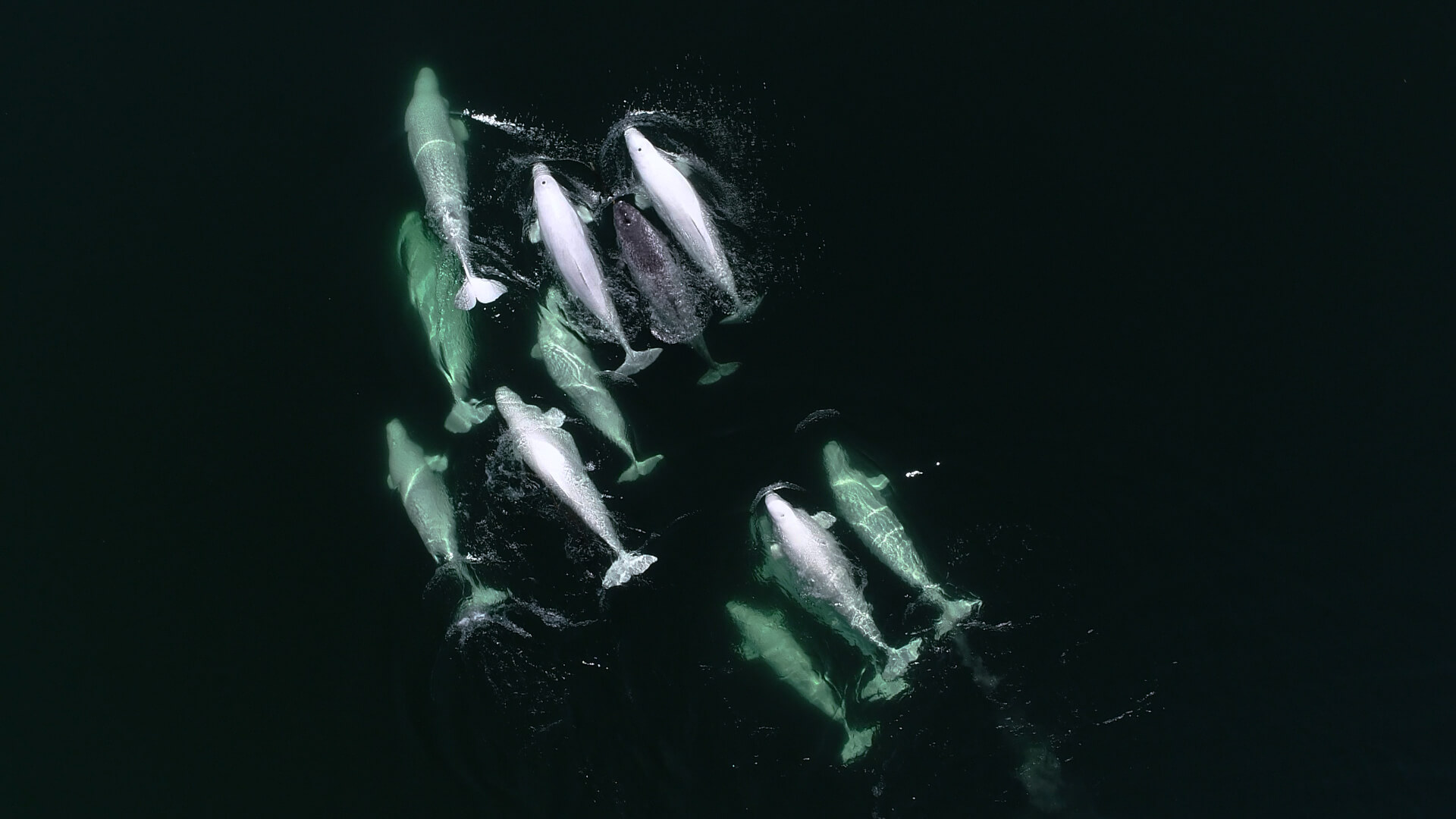Being that they frequent the same territory, narwhals do occasionally come into contact with belugas in the Arctic, without necessarily mingling. Like belugas, the world’s narwhals inhabit the seas of the Arctic circle. In Canada, narwhals spend the winter in the Baffin Bay and Davis Strait between Baffin Island and Greenland. In summer, they migrate to Lancaster Sound, passing north of Bylot Island. Belugas are split into seven Canadian populations, six of which are found in the Arctic and one in the St. Lawrence.
Belugas are the only whales that reside year round in the St. Lawrence. One must go back 10,000 years to understand the isolation of this population, when much of North America was weighed down under a thick sheet of ice that extended southward to the state from New York. As the climate got milder, the ice retreated and the Atlantic Ocean invaded the land up to the Great Lakes. It was in this large expanse of salt water, called the Champlain Sea, that an important population of belugas was found. Today, the St. Lawrence population represents the remnants of that of the Champlain Sea, traces of which are still found as fossilized bones in Ontario and Quebec. Beluga remains represent 80% of the specimens discovered. In fact, this summer, one of these fossils will be exhibited at the Marine Mammal Interpretation Centre in Tadoussac. Known as Félix, it is an 11,000-year-old beluga discovered in Saint-Félix-de-Valois and acquired from the Société de Paleontologie du Québec.
In addition to beluga remains, a harbour porpoise, a humpback whale, a fin whale, a bowhead whale, as well as various species of seals and walruses were also discovered. Two narwhal specimens were discovered, but to the east of the Champlain Sea, in places providing access to this sea, but not within it per se. Perhaps it is a difference in habitat preferences such as depth, or simply chance, that explains the presence of belugas and the absence of narwhals in this ancient sea. Narwhal remains have also been discovered in the Gulf of St. Lawrence.
Even if the narwhal is not a species of the St. Lawrence, it is not impossible for an individual to be observed there. In fact, on July 29, the GREMM team observed a narwhal amongst a group of belugas off the coast of Trois-Pistoles. A most unusual observation! On August 25, 2003, a narwhal was spotted by a researcher during an aerial beluga census being conducted between Les Bergeronnes and Tadoussac. Observations of solitary and probably stray narwhals are reported quite regularly along the coasts of Newfoundland and Labrador.





